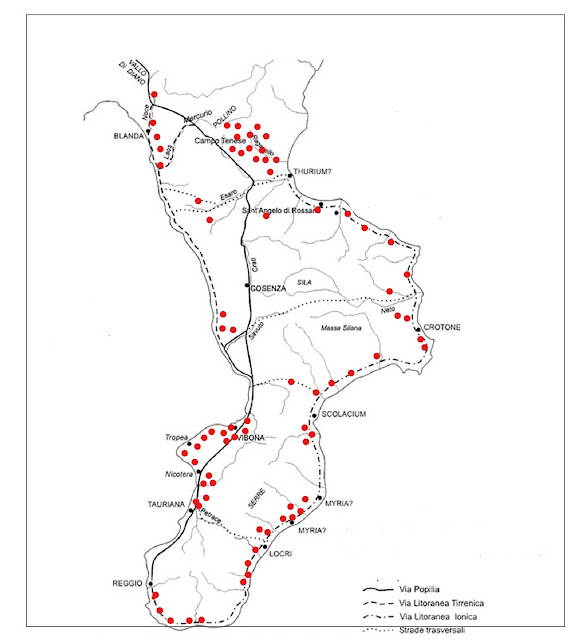the greek TEMPLE of HERA LACINIA - near ancient CROTONE
Dear readers, we discover a piece of Magna Graecia....
One of the largest temples in Magna Graecia
Near to ancient greek polis Kroton and overlooking the sea there was a great and magnific temple dedicadet to the goddess Hera, to which was a sacred place for marriage, the childbirth, the navigation and other things.
It was built between the VII-V century b.C. by the Achei (regional greek people) and its sacrality and knowledge reached every people and part of the Mediterranean.
The temple also had a sacred grove rich in various essences typical of Mediterranean scrub, the "sacred forest" was in ancient time frequented by cows consacrated to the divinity.
One of the largest temples in Magna Graecia
Near to ancient greek polis Kroton and overlooking the sea there was a great and magnific temple dedicadet to the goddess Hera, to which was a sacred place for marriage, the childbirth, the navigation and other things.
It was built between the VII-V century b.C. by the Achei (regional greek people) and its sacrality and knowledge reached every people and part of the Mediterranean.
The temple also had a sacred grove rich in various essences typical of Mediterranean scrub, the "sacred forest" was in ancient time frequented by cows consacrated to the divinity.
It was a pilgrimage destination, here arrived Greeks, Etruschians, Phoenicians, ecc.
in red position of Kroton and in blu the important Temple:
the people that visited the temple, created commercial exchanges also with the polis of Kroton, so its port became more prosperous.
it had 6 columns on the main prospects and 14 columns on the sides, the temple was in Doric stile.
The roof of the temple was composed of slabs and tiles made with the precious marble of the island of Paros (Greece), used only for the most important architectural elements and other sculptures.
The roof of the temple was composed of slabs and tiles made with the precious marble of the island of Paros (Greece), used only for the most important architectural elements and other sculptures.
temple area:
in its archaeological area there were other sacred buildings, like the Katagogion that was used to welcome pilgrims and special guest who had arrived in this sacred place.

temple plan
the ancient polis was founded by Achei, they were skilled navigators arrived here with a great naval fleet, its harbour had a geographically strategic port for trade routes, given the position between ancient city of Taranto and strait of Messina.
The city was famous for its olimpic athletic, the beauty its womes, the fame of its doctors.
Tito Livio: "at the time of greatest splendor its walls were very long".
The city was famous for its olimpic athletic, the beauty its womes, the fame of its doctors.
Tito Livio: "at the time of greatest splendor its walls were very long".
great military castle of Crotone - XVI century:
on this area of the castle there was the greek acropolis
TREASURES OF THE TEMPLE:
The temple was most frequented sanctuary and rich in treasures of the Mediterranean sea (greek-roman period) as an abandoned and looted of its architectural structures (starting of the XVI century).
Thank to archaeological excavation many objects have been found in this area, among these a gold tiara related to the goddess Hera (figure below).
Thank to archaeological excavation many objects have been found in this area, among these a gold tiara related to the goddess Hera (figure below).
gold tiara belonged to the goddess Hera VI century b.C.:
horse head in marble (V century b.C.):
crowned the simulacrum of the goddess, in gold foil its decorations represente myrtle leaves and berries.
it was a part of a sculptural group that adorned the pediment of the temple of Hera Lacinia.
OTHER ARCHAEOLOGICAL FINDS
The little boat represents the contact between the Sardinian world and Magna Grecia, which at the time did not find an obstacle ora barrier in the sea, but a communication vehicle.
OTHER ARCHAEOLOGICAL FINDS
nuragic little boat V century b.C.:
represents a ex-voto, this is a artifact originating from ancient people of Sardinia, this shows that the notoriety of the temple was reached also from western Mediterranean.The little boat represents the contact between the Sardinian world and Magna Grecia, which at the time did not find an obstacle ora barrier in the sea, but a communication vehicle.
graphic reconstruction of the temple
Dott. Giuseppe Lombardo















Commenti
Posta un commento